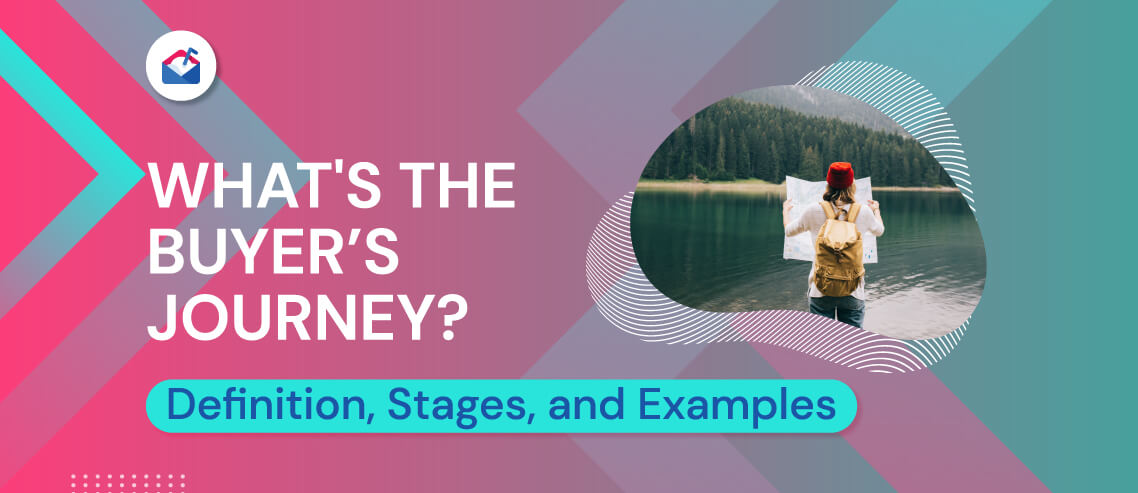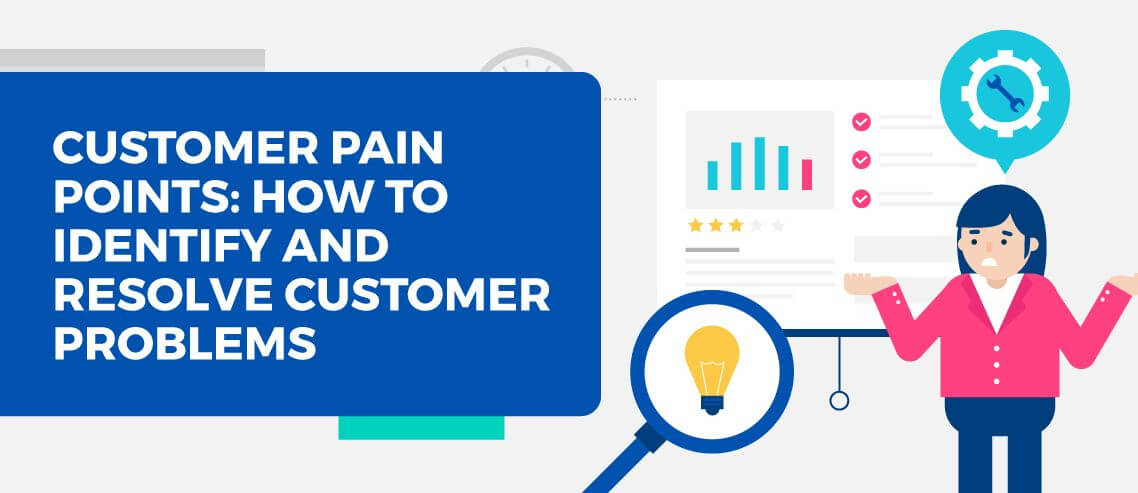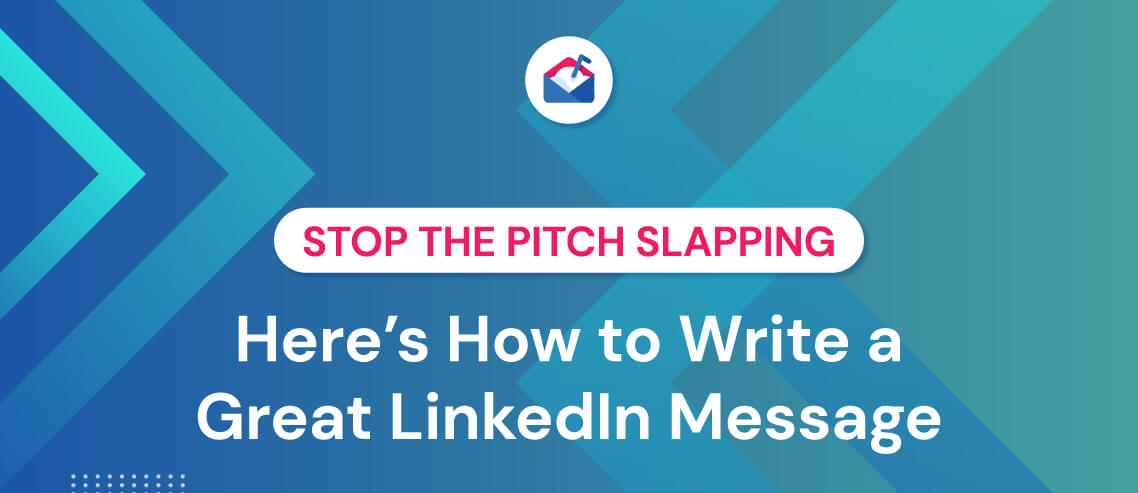How to Leverage the Logrolling Negotiation Technique to Accelerate Sales Deals

Contents
This is the first piece in our ‘sales practitioners’ series, where we get in the weeds with a sales leader about the biggest topics in the sales world. In this article, we chat with Whitney Sales, General Partner at Acceleprise and creator of The Sales Method, on how logrolling can help you get what you want in a negotiation without sacrificing your non-negotiables.
Consider the negotiations we see on tv and in films. Typically, they revolve around dollars and cents, with one party sliding a piece of folded paper across the table that the other party reads, scribbles a counter-offer on, and slides back. Continue ad nauseam until an agreement is reached.
We wish it was that easy! Negotiations don’t work like that outside of the movie studios. Negotiations take time and (deep) understanding of your and other party’s needs. If you’re only haggling over the cost, you’re missing out on crucial tactics that can end up benefiting you and the other side.
I’m not going to tell you price doesn’t matter – of course it does. But no matter where you are on the business spectrum – entrepreneur, startup, established SMB, enterprise, or otherwise – there is so much more to success and growth than just the bottom line.
A good negotiator needs a lot of different skills: problem solving, listening, problem analysis, emotional control, verbal communication, decision making, written communication, collaboration, interpersonal, leadership, preparedness, and more. Sales and marketing reps need to know a lot.
But beyond those skills, you need to identify your core negotiation strategy. You need to go into it with a clear objective, a best possible outcome, a bottom line, and a best alternative to a negotiated agreement, or BATNA.
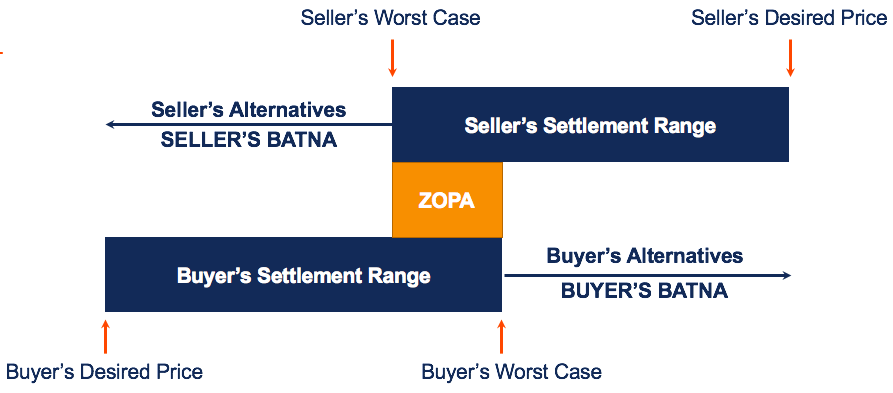
You’ve got to come together somewhere in the tiny zone of potential agreement – or ZOPA – in the middle. Is it any wonder that so many of us avoid negotiation whenever possible?
The harsh reality is, of course, that negotiation is not just a part of business, it’s a part of life. We negotiate all the time.
But here’s the good news: everyone can get better at it if we just change our viewpoint.
“People often see negotiations as win-lose, and they fear the other side will win and they will lose. But negotiating done well can be a win-win. All it really takes is talking with a goal in mind.”
~Marianne Eby, Negotiation Expert and CEO, Watershed Associates
When we fixate on money alone, we fall into the win-lose trap: more than this much, I win – anything less, I lose. Needless to say, this attitude can lead to contentious negotiations and ego on both sides. When dollars are the only term on the table, there’s only so much wiggle room.
So what do you do? You put a lot more on the table and expand the ZOPA.
Enter the logrolling technique.
Logrolling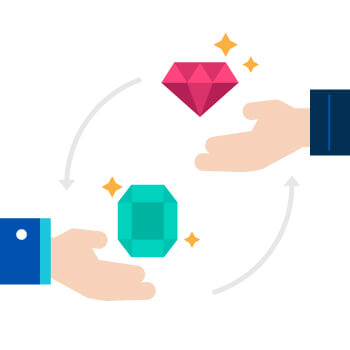
I recently spoke to Whitney Sales, General Partner at Acceleprise and creator of The Sales Method. She has over 10 years of sales experience and has helped scale tens of companies to exponential growth, with several touting a place on the Inc 5000 fastest growing companies list. She’s an experienced negotiator and helped clarify what the logrolling technique is and how to use it.
You can think of logrolling as a game of Texas hold ’em for information and resources, but instead of playing against each other each party has the opportunity to see each other’s cards and trade for the best hand possible with the cards on the table. Each party has resources that are valuable to the other party and some that they care about more than others.
Logrolling is a strategy that is often used in politics with elected officials exchanging information and resources with one another in order to advance their separate agendas.
The term ‘logrolling’ was first used by Congressman Davy Crockett (yes, that Davy Crockett) in 1835. Davy was a true salesman. That’s why his persona is also mentioned in Bob Tinker, CEO of MobileIron and Tae Hea Nahm, Managing Director of Storm venture’s book Survival to Thrival: Building the Enterprise Startup as the type of personality early stage startups need to look for in their early sales hires.
The strategy of logrolling can and should be harnessed in complex sales negotiations. In fact, it’s been shown to be very effective at resolving both partial and complete impasses between parties.
“Logrolling: a negotiation exchange that involves making concessions or the ‘trading-off’ of issues so as to maximize on each sides’ value. So you offer the other side something that they value more than you, in exchange for gaining something from them that you value more than they do.” ~ Negotiation Experts
Consider a typical job negotiation. Do you only discuss salary? Of course not. You want health and dental coverage, vacation time, professional development opportunities, telecommuting days, and more. You may be willing to give on salary if you get more vacation time, etc.
That’s logrolling.
If you only negotiate the dollars, and the parameters are small and finite. Use logrolling, and they can expand exponentially.
Here’s how to get started.
Your Elegant Negotiables
In every negotiation, there are going to be things you care about more than others. These are your elegant negotiables, and the trick is identifying them in advance.
Those with a high other-to-self value (worth more to the other party than they are to you) are the items you can concede to them in order to get more of what you need and want.
“Ask yourself what you care about. Not just in this negotiation, but what do you care about and need to scale as a company? What’s going to move you forward as a company outside of the contract value?”
~Whitney Sales, General Partner at Acceleprise Ventures + Creator of The Sales Method
Brainstorm. Get creative Write them down. Prioritize and rank them. Know going in what you’re willing and not willing to give on.
Much of this depends on your overall goal and stage as a business. Think about it. Make it part of your preparation before every negotiation to maximize the long-term value of the contract and your chances of success … and remember that ‘success’ should be considered a win-win outcome.
Your BATNA
Next, give some thought to your Plan B. What’s the next best alternative to a negotiated agreement? You should enter a negotiation aiming for a mutually-beneficial conclusion. But let’s be honest: that’s not always possible.
Do you want to come up with something else on the fly in real-time while under pressure? No.
In order to make an educated and informed decision about a take-it-or-leave-it offer, you need to already know your alternatives.
If the offer is better than your BATNA, you take it. If it’s worse, you walk away. Simple.
But it doesn’t stop there.
In order to logroll more effectively, you should also consider their BATNA, too. If they can’t work out a deal with you, what might they do instead? You won’t be able to know for certain, but looking at the available options (your competition), their known needs, budget constraints, and so on, you’ll get a pretty good idea.
Then, ask yourself: Whose BATNA is better?
Essentially, are you negotiating from a position of strength (you don’t need them as much as they need you) or weakness (vice versa).
Answer that one question, and you’ll know whether you’ll be conceding more or less than them. Be prepared with your prioritized elegant negotiables, and that becomes easier to manage (and control).
The Harvard Program on Negotiation has a free BATNA guide if you want to dig deeper into this subject.
The Common Variables
At this point, you may be drawing a blank on what exactly to rank and prioritize. Besides the amount itself, what else can you play with during a sales negotiation?
I’m glad you asked. Whitney Sales maintains that the list of potential negotiables is much bigger than most of us would assume at first.
There’s money, of course, but even that includes much more than the figure itself. There’s room for some back-and-forth on payment terms, payment upfront vs. payment at the end, deposit amount, monthly retainers, length of payment terms, discount for paying ahead of schedule, payment method, and so on.
Moving beyond dollars and cents considerations, other variables might include:
- The contract length
- The time frame
- Opt-out clause and conditions
- Support contact (head of engineering vs. customer help desk, for example)
- Customer support
- Implementation personnel (again, those ‘higher up’ would be considered an upgrade)
- Specific responsibilities of each party
- Available integrations
- Exclusivity
- Participation in customer advisory board
- Willingness to promote or participate in marketing campaigns
- Joint PR
- Joint case studies
- Added features
- And on and on …
A contract is so much more than just revenue and fees. It’s a game of give and take until both sides are happy.
Sales makes special note of the customer advisory board, case studies, and interviews for startups and those looking to kick-start growth or expansion. Landing a big client in the early days at a reduced fee if they agree to a case study and/or allow you to use them in your marketing can more than make up the financial shortcoming.
They’re happy. You’re happy.
Sales further suggests sweetening that deal if you’re an early stage company by including early access to new products and features, or discounts on future purchases and contracts.
The name recognition that comes from having a known entity as a client is invaluable and gets your foot in the door with potential new customers of any size. Isn’t that worth losing a little revenue in the short term?
As Sales says, virtually everything is negotiable depending on your priorities.

Prioritizing Your Variables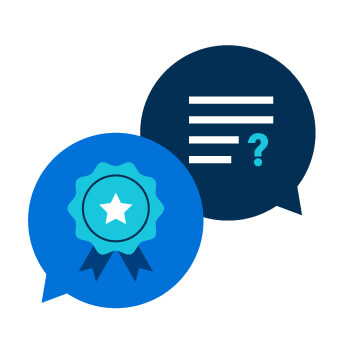
Your priorities will depend on your individual organization. There is no one correct idea or order.
Early stage? Payment terms are probably very important. Getting paid in full upfront might free you from fundraising and you’ll have the cash flow – and time – to ramp up development.
Fully funded but looking to spread awareness? Agree to delayed payment terms in exchange for their participation in promotion and marketing endeavors.
Struggling with the customer experience? Participation on an advisory board is priceless.
Ask yourself: What do you need most from them? What do they have available that could benefit the company?
“During a negotiation, get everything on the table. It’s a push and pull. Discuss. Ask. Listen. Ask questions. There is no trick to it.”
~Whitney Sales
Sales suggests asking them what an ideal partnership looks like to them, or about their best vendors and what makes those relationships so successful for them.
You get instant intel on their priorities in addition to your priorities as determined before sitting down at the table.
That’s playing to win-win.
I can’t tell you your priorities any more than you can tell me mine. Generally speaking, creating a customer advisory board with big fish involvement and being able to market those marquee customers carries a lot of weight. Each one could be a case study you can use to pull in leads with similar pain points.
So much depends on just asking questions, as most don’t think about negotiating these “non-negotiable” elements.
Get all of the options on the table and get them rolling to identify which ones are more valuable to the customer.
“I have a theory that selling involves two skills: solving someone’s pain, and project management. Sales is the identifying and solving of a pain point. Then you project manage the customer to a close and long-term customer success”
~Whitney Sales
Logrolling in Practice
In the real world, implementation costs can often be more than actual dollars spent for large and enterprise-level businesses.
Use that. Hammer out the details of how it’ll happen and who will do what with the logrolling technique.
If saving time on implementation is more important to them than dollars spent, for example, you can negotiate professional services (engineering, customer support, etc) as dollar services you tack on to get things done faster.
If, however, the cost of implementation is a sticking point, work with that. Eat some or all of that cost upfront if it means bigger long-term profit.
ConvertKit offers its free Concierge Migration service when certain conditions are met, for example. Wealthsimple will pay the transfer fee for any account over a certain amount.
What’s important to you? What’s important to them? Where can you meet in the middle (your zone of possible agreement)? The overlap is the golden zone.
Whitney Sales likens it to building an offer versus selling ‘just’ a product. The perceived value of what you’re offering usually comes from having a conversation instead of a hard-nosed negotiation.
Ideally talk with the main stakeholder and prioritize for their success as much as your own, and the battle is half won.
You want to be a partner, not just a provider.
“The biggest thing for an organization to be effective is to examine the strengths and weaknesses and explore how to utilize everything that touches the company externally to expand. What do your advisors, mentors, customers, investors, and more care about and what’s going to make them better? Where do their and your priorities align?”
~Whitney Sales
If you’re still not sure about what you have to work with, sit down with the most senior salesperson in a larger business, or perhaps the CEO or another member of the leadership team if you’re a startup. Know what you need to know in order to close more deals.
Ask about current priorities. Ask about short and long-term goals. Ask about anything and everything.
Just ask. Then get rolling.


